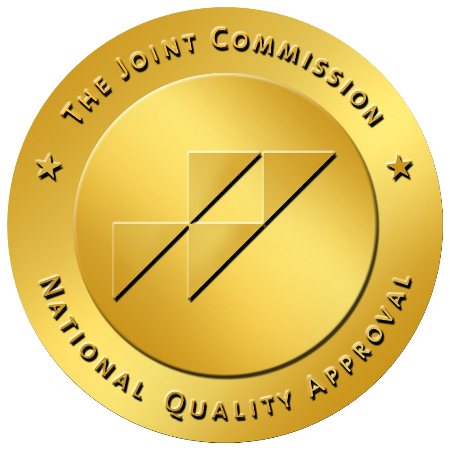Alcohol-Related Liver Disease: Risks and Stages

In the United States, alcohol is the leading cause of liver damage and diseases. Alcohol often harms the liver first, but symptoms may not appear until later.
Alcohol-Related Liver Disease
Often, signs of liver damage from alcohol are subtle and may go unnoticed. Asking for liver function tests during regular check-ups is important to catch any issues early. If you don’t tell the truth about how much you drink, doctors may not check for alcohol-related liver disease. Alcohol is linked to almost 50% of liver cirrhosis deaths.
The National Institutes of Health (NIH) states that no set amount of alcohol or regular drinking schedule can accurately predict liver disease. Determining a specific threshold for alcohol consumption that guarantees the development of liver disease is not possible.
The risk of liver disease from alcohol consumption varies from person to person and is influenced by a variety of factors. It is important to be mindful of your alcohol intake and its potential impact on your liver health.
Drinking too much alcohol, binge drinking, or even moderate drinking can all lead to alcohol-related liver disease. Drinking alcohol can harm the liver, especially for people with certain conditions. Some people are more at risk for liver damage than others.
Several risk factors can indicate a heightened likelihood of developing alcoholic liver disease, including:
- Genetics – Playing a significant role in how individuals metabolize alcohol. Some people have less enzymes to break down toxins and alcohol in the liver, causing more strain on the liver. Furthermore, specific people naturally have a higher susceptibility to liver diseases that cause alcohol consumption to worsen.
- Weight – Excess body weight contributes to the early development of alcoholic liver disease due to pre-existing fatty deposits in the liver. This condition makes people more likely to gain more fat and worsen liver damage as they continue to drink alcohol.
- Diet and Nutrition – People struggling with substance use disorders frequently experience undernutrition and weight loss, either due to diminished appetite or the impact of excessive alcohol consumption on nutrient absorption. Certain foods can combat free radicals, which are harmful molecules that can harm cells and organs. The liver produces free radicals when metabolizing alcohol. Inadequate absorption and elimination of these free radicals can escalate the risk of developing diseases and cancer.
- Smoking – Research indicates that cigarette smokers face increased risks of developing alcohol-induced liver disease.
- Gender – Women are more susceptible to alcoholic liver diseases at lower levels of alcohol consumption and within shorter timeframes compared to men. This increased vulnerability is attributed to differences in metabolism and body fat distribution.
- Co-occurring Liver Diseases – Existing liver conditions, mainly hepatitis, can significantly hasten the progression of liver damage caused by alcohol.
- Other Medications or Drug Use – Various prescription drugs, over-the-counter pain relievers, and illicit substances such as heroin exert considerable stress on the liver. When these are used in conjunction with alcohol, a practice known as polysubstance use, they significantly amplify liver damage.
If liver disease is caught early and the person stops drinking and takes care of their health, it can be reversed.

What Does Alcohol Do to the Liver?
To comprehend the effects of alcohol on the liver, it’s essential to grasp the liver’s function within the body. The liver acts as a crucial filter, processing and eliminating toxins, aiding in nutrient processing, and playing a key role in the immune system. It metabolizes alcohol at a rate of approximately one standard drink per hour.
The National Institute on Alcohol Abuse and Alcoholism (NIAAA) reports a standard drink equates to:
- 12 ounces of beer
- 5 ounces of wine
- 1.5 ounces of spirit
When the liver breaks down alcohol, it generates a harmful substance that inflicts damage to the liver. The greater the amount of alcohol processed, the more intense the harm, potentially leading to fibrosis and changes in the liver’s architecture. As this damage advances, the liver’s functionality declines, increasing bodily harm and strain.
What Are the 3 Stages of Alcoholic Liver Disease?
Severe liver damage from alcohol has three main signs. These signs are jaundice, fluid buildup in the abdomen, and significant weight loss.
Jaundice is a yellowing of the skin and eyes. Fluid buildup in the abdomen can cause swelling and discomfort.
Significant weight loss can occur due to the liver’s inability to function properly. These signs show severe liver disease, demonstrating how heavy drinking can lead to total liver failure over time.
The indicators of liver damage from alcohol differ depending on the stage of progression. Healthcare experts categorize alcohol-related liver disease (ARLD) into three severity levels. This helps diagnose and treat the condition effectively.
Symptoms of ARLD can be similar despite the different severity levels. Alcohol-related liver disease has three stages: fatty liver, hepatitis, and cirrhosis. Cirrhosis is the most serious form of damage. The following are the three phases of liver disease, each accompanied by its specific symptoms.
Stage 1: Alcoholic Fatty Liver Disease
Heavy drinking and binge drinking are a risk of getting alcoholic fatty liver disease, also known as alcohol-related steatohepatitis. This ailment can progress rapidly, typically following just a single or a couple of episodes of heavy alcohol consumption.
The symptoms of fatty liver are often subtle but may include:
- Discomfort in the upper right abdomen
- Liver inflammation
- Loss of appetite
- Fatigue
- Weakness
- The NIH says that up to 90% of people with alcohol problems could get fatty liver disease. The best treatment is to stop drinking alcohol and make lifestyle changes. This can help the liver heal over time. If left unchecked, chronic fatty liver may progress to scarring and more severe liver conditions.
Stage 2: Alcoholic Hepatitis
Alcoholic hepatitis is distinct from other infectious forms of hepatitis. It primarily affects people who drink heavily, though it can also arise in individuals who engage in binge drinking.
This sickness happens when the liver cells die because of long-lasting inflammation. It causes scarring, known as fibrosis, which results from repeated or prolonged inflammation. The intensity of alcoholic hepatitis can differ, with signs escalating in line with the advancement of the condition.
Symptoms of alcoholic hepatitis encompass a variety of physical manifestations, such as:
- Elevated body temperature
- Reduction in body weight
- Feelings of nausea
- Episodes of vomiting
- Increased blood pressure
- Pain and tenderness in the abdominal area
- Jaundice, characterized by a yellowing of the eyes and skin
- Urine of a dark hue
- Bowel movements that are black or resemble clay in texture
- An increased tendency to bleed and bruise
- Delayed wound healing
Severe alcoholic hepatitis can be deadly if not treated quickly, with a death rate of about 50%. The NIAAA indicates that approximately 40% of people diagnosed with alcoholic hepatitis who persist in consuming alcohol might progress to cirrhosis.

Stage 3: Alcoholic Cirrhosis
Alcoholic cirrhosis represents the ultimate and most critical phase of liver deterioration due to alcohol consumption. Cirrhosis causes too much scar tissue in the liver, which makes it hard for the liver to work properly.
This makes the body send blood through smaller blood vessels instead. This redirection of blood flow leads to a condition called esophageal varices, marked by strained and swollen veins. Esophageal varices, usually because of cirrhosis, generally exhibit no signs until they hemorrhage or burst.
Indications of cirrhosis due to alcohol and esophageal varices include:
- Confusion
- Ascites, which is fluid accumulation in the abdomen
- Swelling of the legs, hands, and feet
- Palms that are red with white fingernails
- Clubbed fingers
- Vomiting blood
- Intestinal bleeding
- An enlarged spleen
- Kidney failure
- Severe jaundice
- Malnutrition
- Chronic fatigue
- Episodes of fainting
- Liver spots or discolored patches on the skin
To assess the extent of cirrhosis, doctors need to perform liver function tests or a liver biopsy. People with severe alcoholic cirrhosis who continue to drink alcohol have less than a 50% chance of living for five years. The survival rate for people who cease alcohol consumption and consistently undergo treatment for cirrhosis rises to approximately 60%. Nonetheless, this proportion could fluctuate depending on other prevailing health issues.
For people with severe liver disease, the main treatments may involve ongoing care and possibly a liver transplant. However, liver transplants are not done for patients who are still drinking alcohol.
People with alcohol problems need addiction treatment programs to stop drinking before they can get organ transplants. Healthcare providers usually require them to attend these programs.
Chronic long-term drinkers should not suddenly stop drinking. This can cause alcohol withdrawal, seizures, and other serious problems. Seeking medical help is important for chronic drinkers who want to stop drinking.
Withdrawal symptoms can be severe and potentially life-threatening. Seek support from a healthcare professional to quit drinking safely. Generally, a medically assisted detox is the initial step in any treatment plan to guarantee safety during withdrawal.
Inpatient Alcohol Treatment at Northridge Addiction Treatment Center
At Northridge Addiction Treatment Center, we recognize that quitting drinking is not straightforward for people battling alcoholism.
We provide compassionate, evidence-based treatment tailored to your specific needs in your recovery journey. Our treatment center offers support, privacy, and peace during your stay. We also provide medical detox on-site.
At NATC, we work with you to create a personalized treatment plan. This plan focuses on your needs and recovery goals.
We use proven therapies to help you achieve your goals. We treat all aspects of addiction, including physical and underlying causes. We aim to help individuals heal and live a life centered on recovery.
Reach out now to speak with one of our treatment specialists; we are ready to welcome you into a world of recovery and possibilities.
Find Meaningful Recovery
Our caring and compassionate specialists are eager to help you comfortably navigate this journey to recovery. Our individualized treatment plan, programs, and therapies may be a perfect match for you or your loved one. Let us assist you in living the happy life you deserve. It starts with a phone call.




